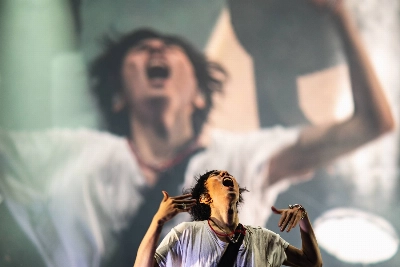There has long been a taste in Japan for the bizarre and abnormal. The experimental Taisho Era was no exception. A desire for sensory experience existed even in cinema. During a funeral scene, for example, an attendant might light sticks of incense in the theater, drawing the audience into the ritual.
In her helpful introduction to this novella, translator Elaine Kazu Gerbert describes the period's love of illusion, altered states and perspectives. Panoramas were especially popular. Imposing circular structures with ramps and viewing platforms, visitors were treated to a series of large-scale realistic paintings lit up from above. The images depicted historical events and exotic locations. A huge panorama stood on what sounds, from descriptions, very like the site of the present, endearingly dilapidated Hanayashiki amusement park in Tokyo's Asakusa entertainment district.

















With your current subscription plan you can comment on stories. However, before writing your first comment, please create a display name in the Profile section of your subscriber account page.